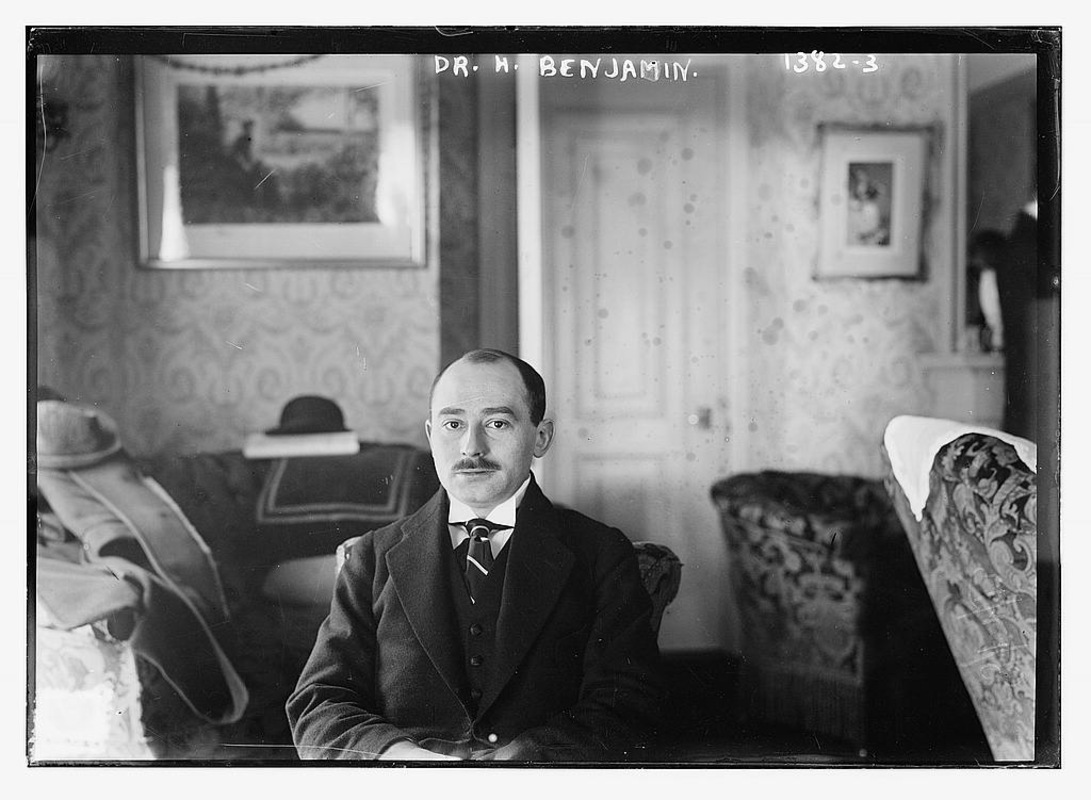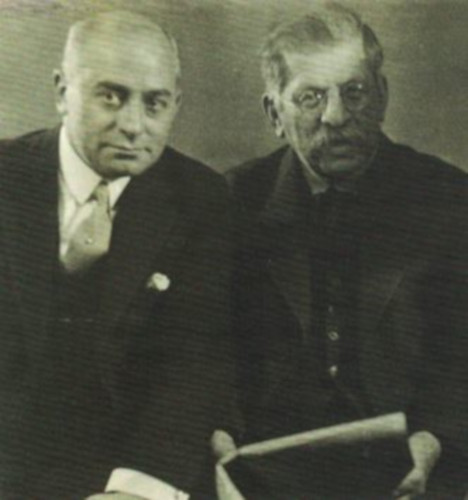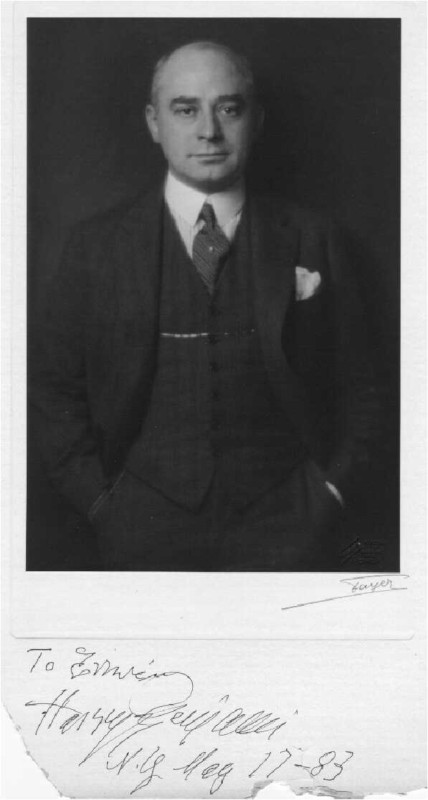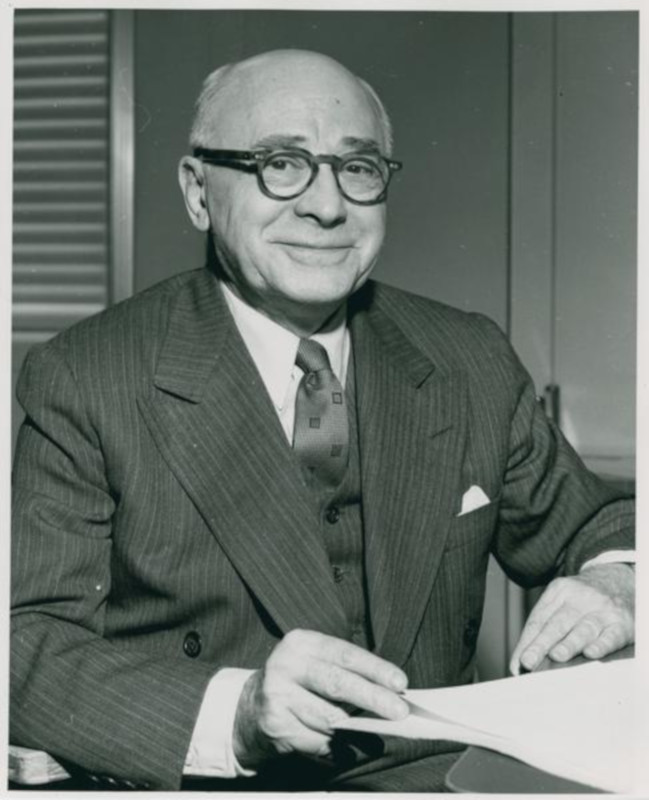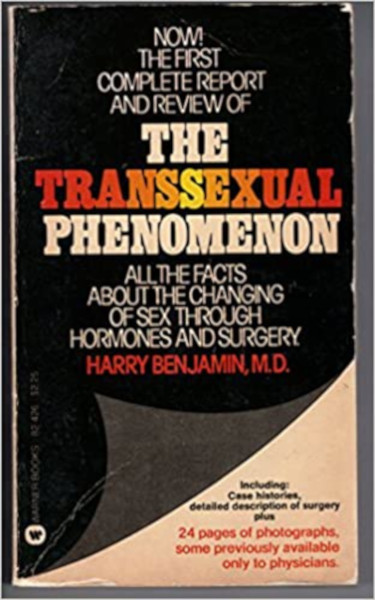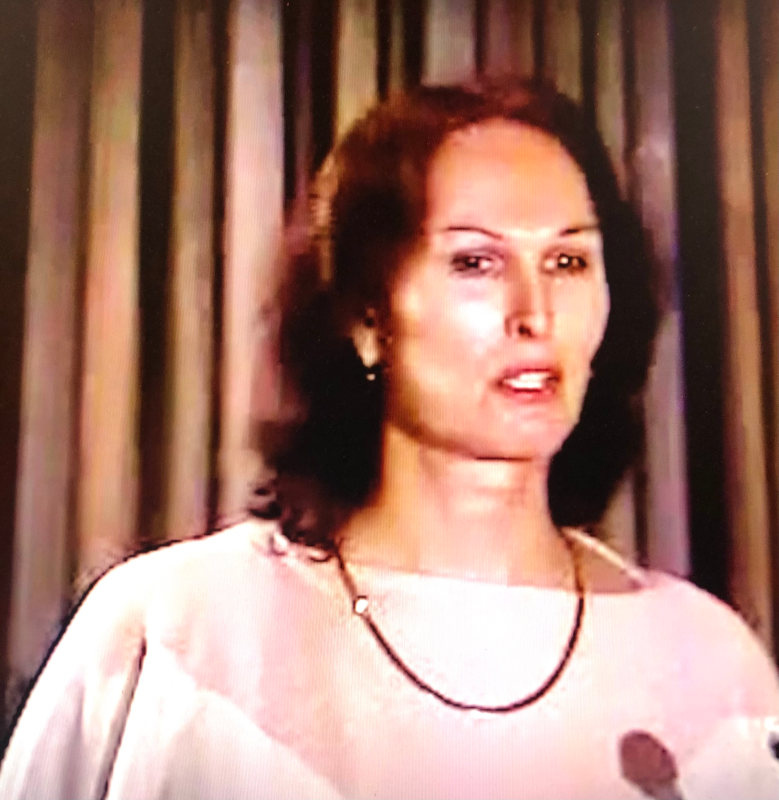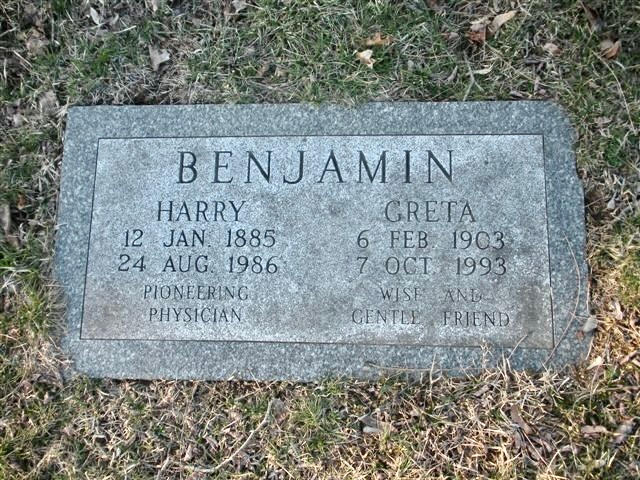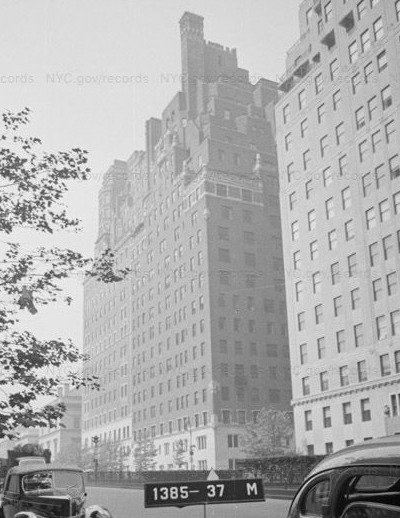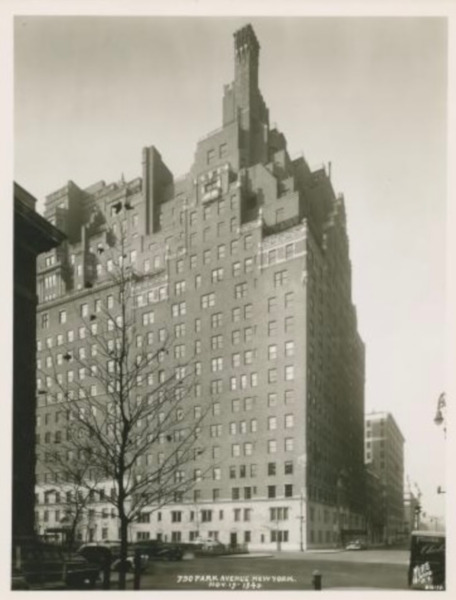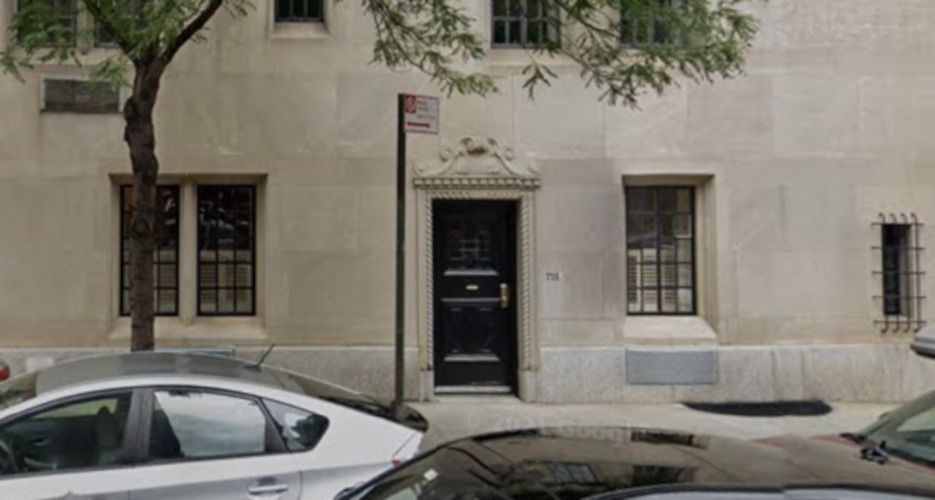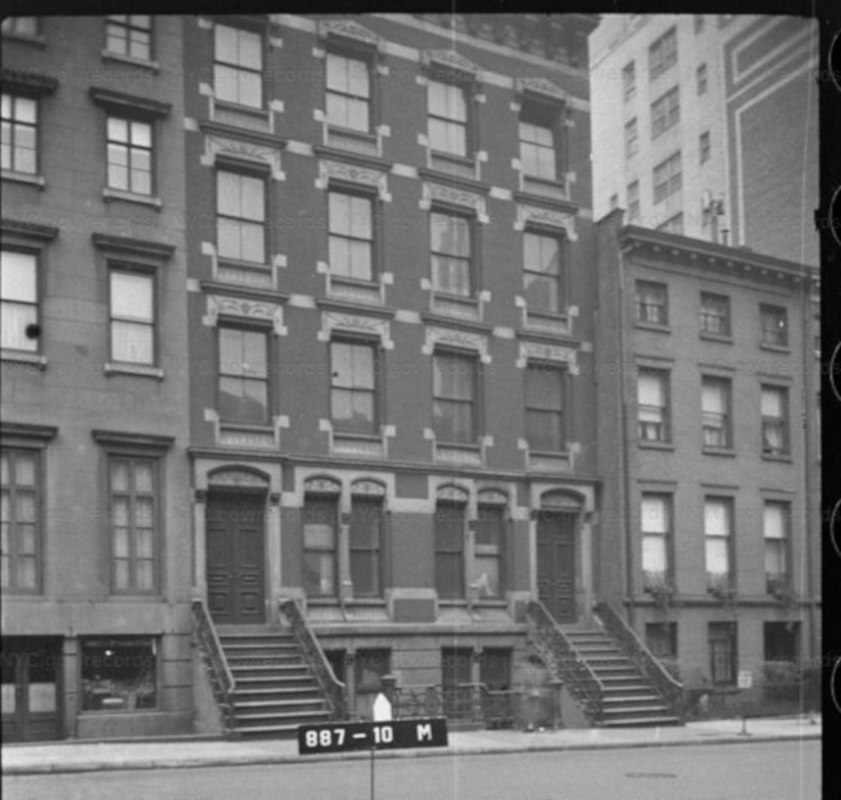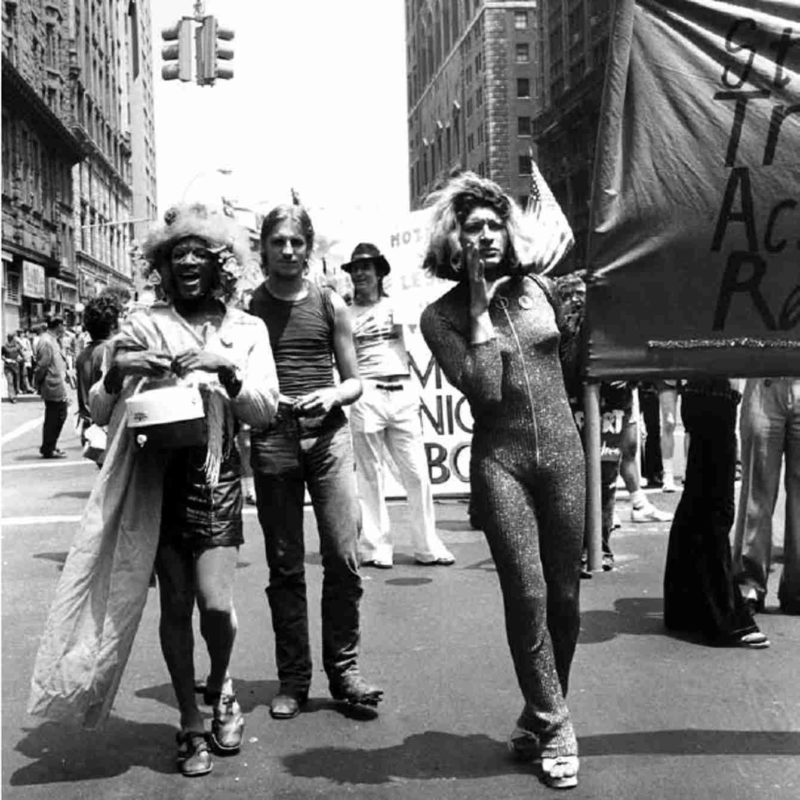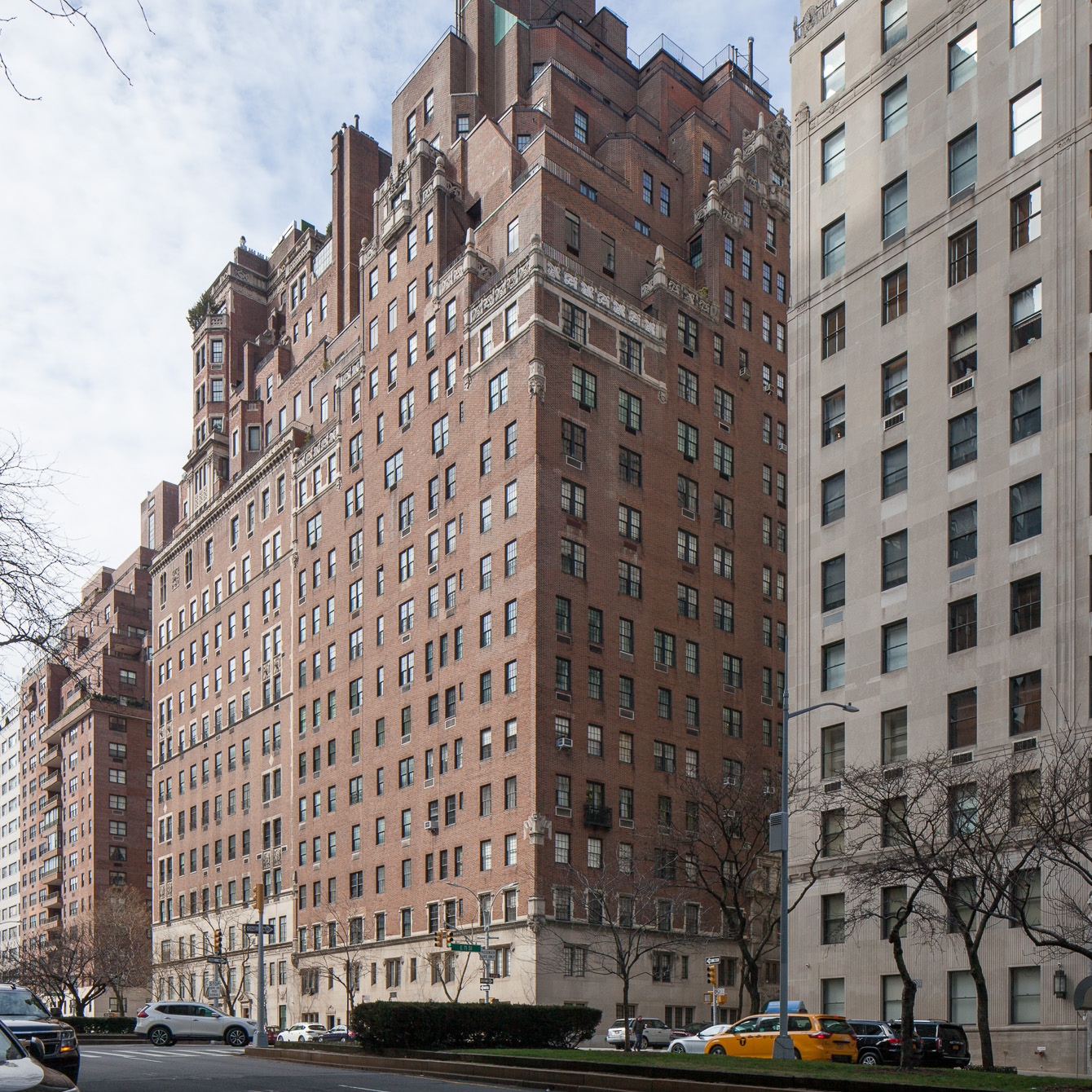
Trans Medical Care at the Office of Dr. Harry Benjamin
overview
Through the late 1940s, the use of hormone therapy and surgery as medical treatment options for trans individuals was not widely studied, available, or legal in the U.S.
This approach changed through the work of Dr. Harry Benjamin, who in 1948, became one of the first physicians in the U.S. to work with transgender individuals, first providing treatment and care from this office until c. 1956 and, then, other locations. When he retired in 1975, he was recognized as the world’s preeminent expert on the subject and had seen upwards of 1,500 trans patients.
History
Starting in the late 1940s, the 728 Park Avenue office of Dr. Harry Benjamin (1885-1986) became an early center for trans medical treatment and care, attracting international recognition. By the early 1950s, his practice became almost exclusively focused on trans patients, including the pioneering Christine Jorgensen. Born and educated in Berlin, Dr. Benjamin came to the U.S. in 1913, and by 1915 had opened a small practice in New York City. His first specialty was treating tuberculosis, but, early in his career, he began focusing on the study of hormones (what became known as endocrinology) related to human aging and geriatrics.
Dr. Benjamin had been interested in the science of sexuality since he was a medical student and developed a lifelong friendship with Magnus Hirschfeld, the German physician and sexologist. In c. 1907, Dr. Benjamin joined Hirschfeld on visits to Berlin’s gay and transgender bars as part of Hirschfeld’s research. Dr. Benjamin and his wife Gretchen hosted Hirschfeld at their 239 West 75th Street apartment for dinners and presentations during the New York City portion of his 1930 U.S. speaking tour, which the couple was instrumental in arranging. Up until World War II, Dr. Benjamin routinely traveled to Europe for work and met with leading experts in the field of sexuality, including Hirschfeld, physicians Havelock Ellis and Alfred Adler, neurologist Sigmund Freud, and endocrinologist Eugen Steinach.
In c. 1937, Dr. Benjamin relocated his successful medical practice to a ground floor office suite at 728 Park Avenue, which he occupied until c. 1956. Through the late 1940s, his practice focused on new developments in endocrinology. While working at his summer practice in San Francisco in 1948, Dr. Benjamin was introduced to his first transgender patient through a referral by Alfred Kinsey. At that time, the standard treatment for trans people in the U.S. was limited to psychoanalysis aimed at making the mind fit the body or, worse, shock treatment, lobotomy, or institutionalization. Dr. Benjamin was unconvinced that psychoanalysis was an effective treatment. He took, what was at the time, a more radical medical approach believing that hormone treatment and surgery, options then in limited use in Europe, would better serve the patient.
For almost 30 years, beginning at the Park Avenue office location until his retirement in 1975, Dr. Benjamin was the leading American figure on the subject. Christine Jorgensen became Dr. Benjamin’s patient in 1953, a year after her overseas gender reassignment surgery made headlines in the U.S. The two were the most influential public advocates of what today would be termed trans issues and treatments. He brought the word “transsexual” into widespread medical use and treated numerous patients with hormones and, for a few, arranged gender reassignment surgery.
[Dr. Benjamin] was simultaneously their hormone physician, a psychiatric counselor, a referral service, and even an inspirer of networks.
In 1957, Dr. Benjamin founded the Society for the Scientific Study of Sexuality. That year, his office was briefly located at 125 East 72nd Street; at some point between 1959 and 1962 it relocated to 44 East 67th Street. In 1963, trans man and philanthropist Reed Erickson contacted Dr. Benjamin to begin his gender reassignment surgery. From c. 1963 to 1968, with funding from the Erickson Educational Foundation, Dr. Benjamin relocated to a large office at 1045 Park Avenue. In 1966, he published The Transsexual Phenomenon, the first book on the subject, which became an important source for the medical profession and transgender individuals. His classification system and model of care remains a basic paradigm for transgender care, although it is considered by many transgender activists to be patronizing and pathologizing. Due to reduced support from the Erickson Educational Foundation, between 1971 and 1976, Benjamin downsized his office size and relocated multiple times, with locations at 44 East 67th Street, 45 East 74th Street, and 1 East 72nd Street, his final office at the time of his retirement.
Through speaking engagements, publications, and referrals, Dr. Benjamin became known as an important resource and ally. The Harry Benjamin International Gender Dysphoria Association (now known as the World Professional Association for Transgender Health), formed in 1978, was named after Benjamin in honor of the work he had done for transgender people. He provided counsel and treated both lesser known and well-known individuals, including Charlotte Charlaque, Jan Morris, Renée Richards, and Jeanne Hoff, who took over his remaining practice. Benjamin’s patients were mostly from white, middle- and upper-class backgrounds.
I don’t know what our fate may have been [without Dr. Benjamin]: a fragmented personality, a suicide, many possible things other than the consolidated productive people that many of us are.
Dr. Benjamin died at the age of 101 in 1986. For decades until his death, he resided at 113 East 31st Street with his wife, who survived him.
Entry by Ken Lustbader, project director (January 2022; last revised January 2024), with special thanks to Arlene Shaner, Historical Collections Librarian, The New York Academy of Medicine.
NOTE: Names above in bold indicate LGBT people.
Building Information
- Architect or Builder: Lafayette A. Goldstone
- Year Built: 1928-29
Sources
Eric Pace, “Harry Benjamin Dies at 101; Specialist in Transsexualism,” The New York Times, August 27, 1986, accessed December 31, 2021, nyti.ms/3pP0AE1.
Erwin J. Haeberle, “The Transatlantic Commuter: An interview with Harry Benjamin on the occasion of his 100th birthday,” Sexualmedizin, vol. 14, 1 / 1985, accessed December 31, 2021 from the Archive for Sexology, bit.ly/32FvDJM.
Laura Smith, “This doctor was an early champion of transgender people, and even helped the SFPD understand them,” Timeline, August 11, 2017, accessed December 31, 2021, bit.ly/3JAui7B.
Leah Cahan Schaefer Ed. D. & Connie Christine Wheeler Ph.D., “Harry Benjamin’s first ten cases (1938- 1953): a clinical historical note. Archives of Sexual Behavior, 24 / 73-93 (1995), accessed December 31, 2021. bit.ly/3eNFIqg. [source of first pull quote]
Mark Schoen, Ph.D., “Harry Benjamin, M.D. Memorial Service”, January 10, 1987, SexSmartFilms.com: 2007. accessed December 31, 2021, bit.ly/3sQ5pPi. [source of Renée Richards pull quote]
Medical Directory of The City of New York, 1917 through 1975, published by the Medical Society of the County of New York.
Nicolas Matte, “Putting Patients First: Harry Benjamin and the Development of Transgender Medicine in the 20th Century,” Master of Arts Thesis, University of Victoria: 2001, accessed December 31, 2021, bit.ly/32IdpXO.
Susan Stryker, “Benjamin, Dr. Harry (1885-1986),” GLBTQ Encyclopedia, 2004, accessed December 31, 2021, bit.ly/3JD66Bj.
Tom Buckley, “Transsexuality Expert, 90, Recalls ‘Maverick’ Career,” The New York Times, January 11, 1975, accessed December 31, 2021, nyti.ms/3sXNrua.
Zagria, “Harry Benjamin (1885 – 1986): Parts 1, 2, 3 and 4,” A Gender Variance Who’s Who, October 1, 2012, accessed December 31, 2021. bit.ly/3JAuW51.
Do you have more information about this site?
This project is enriched by your participation! Do you have your own images of this site? Or a story to share? Would you like to suggest a different historic site?
